Costumed kid heroes sort of begin with Robin, who first appeared in April 1940. Super-powered sidekicks sort of begin with Toro, who appeared in “Autumn 1940,” though with the tradition of comics coming out prior to their publication dates, he probably first saw the light of day in August. Where adult heroes started with superpowers (Superman) and then dispensed with them (Batman), the kid heroes reversed the order.
With Toro, kid heroes kind of got into a rut where every one of them was a cut-down version of their mentor. Meaning not only their skills and methods, but their personality as well, because Toro’s predecessor Robin has a completely different demeanor to Batman. They are the same gimmick in a smaller package and that trope would last for decades.
Toro bursts into flames like the Human Torch. Aqualad is Aquaman minus the ability to command sealife. Speedy is an archer just like Green Arrow. Kid Flash is Flash Junior and is no better than that, though sometimes he’s not as fast. Even Wing, the sidekick to the Crimson Avenger, is another costumed, masked acrobat in countercharged colors. And so on.
There was some variation to all this. Wing was Asian and the Crimson Avenger was white. And the Vigilante had Stuff, the Chinatown Kid. However, it was not until Icon and Rocket that there was a black hero with a sidekick or a black sidekick. To date no African American, Asian, or Native American hero has ever had a white costumed sidekick.
But don’t worry, there’s also sexism. No male hero had a female sidekick until Wolverine teamed up with Jubilee. Note that though there was an Aquagirl, she was paired with Aqualad, she did not have a string of adventures with Aquaman.
Of the original Teen Titans, only the female, Wonder Girl, was not a regular sidekick to an adult hero. (The others were Robin, Aqualad, and Kid Flash and even original writer Bob Haney couldn’t explain why Speedy wasn’t in the original group.) And the first female hero with a teenaged sidekick was either Power Girl with Terra or it’s yet to happen. In this I discount the fifties Batman family where Batwoman has a sidekick of Bat-Girl. Again, it’s just a parallel that adds to Batman and Robin but does not stand on its own.
For some reason, a lot of sidekicks used their first names as their superhero names. There is never an explanation for why this is. So we have Bucky, Sandy, Dan, and Tim. Not only is Tim the second dumbest name any superhero ever had, but he is dressed exactly like his mentor, the Black Terror. Not so frightening.
Most of the sidekicks descend directly from Batman and Robin and pair in the same fashion. So there’s Captain America and Bucky, the Sandman and Sandy the Golden Boy, Mr Scarlet and Pinky (Pinky, he wins), and so on. There was some variation but most of the variations were not very successful.
For example, DC actually thought they could recreate the success of Superman and Batman when they created Starman. They failed. But then they thought their third time lucky would be with the Star-Spangled Kid and Stripesy. Sidekicks were to give the reader something to identify with, right? Their readers were kids, right? So a patriotic Batman and Robin where the Robin figure takes the lead would be a gold mine. So the teenage Star Spangled Kid told his adult sidekick, Stripesy, what to do and Stripesy generally wasn’t happy about that.
They started out in October 1941 and had dribbled out their ending by October 1948. The series started with the plot device of the two characters operating separately until they happen to work on the same case. This was artificial: I mean, if you’re going to wrap yourself in the flag you should wrap yourself in only half of it, right? However, it means technically the Star-Spangled Kid was the first kid hero to operate without adult supervision or protection. But despite his firsts, or literally because of them, the series didn’t go over all that well and was quickly forgotten by the comic-book fans.
Simply put, Sylvester Pemberton (Star-Spangled Kid) wasn’t something the usual reader of comic books could identify with. He was a toff, a rich kid. And Pat Dugan (Stripesy) was his chauffeur. There was nothing for working and middle-class kids to identify with. You can do anything in comics except take away the emotional connection. Sylvester didn’t hook with the readers, and his position as boss of an adult just didn’t resonate. No one ever made that mistake again – almost – and I seriously wonder what DC was on when they thought this was going to be a hit in the class of Superman or Batman.
But during their four last appearances, the Kid and Stripesy brought in a new character; Merry, the Girl of a Thousand Gimmicks. She was Sylvester’s adopted sister and she nudged her brother out of the comic books. After the war, people didn’t want anything really serious. It was the time of gimmick songs like, “How Much is the Doggie in the Window?” In the same way, comics sexed up a bit with female Kid Heroes and adult female sidekicks like Sun Girl and Golden Girl.
Merry only lasted nine issues.
DC did almost do the same bad idea again with TNT and Dan the Dyna-Mite. The pair were a teacher Thomas N Thomas (TNT – using the initials of his real name) and his student, Daniel Dunbar. Their powers were only temporary but could be unleashed if they touched each other. The pair only appeared in eighteen Golden Age issues. It seems ‘let your teacher touch you and get power’ didn’t appeal to people.
Meanwhile, back in 1941, two stand-out kid heroes would be forgotten. Actually, we still remember them but we barely count them as superheroes. We more commonly think of them as almost parodies of superheroes. Captain Marvel Jr first appeared December 1941. A year later, Mary Marvel was introduced, though to be fair, it’s hard to tell exactly how old Mary is supposed to be. These are firsts in that they are the first sidekicks with powers equal to the adult hero. They were also the first kid heroes to frequently operate independently of the adult hero.
But before the Golden Age died out, it produced two more kid heroes. A lot of people will tell you what made Spider-Man so different was he was the age of a sidekick but went out on his own. But the Star-Spangled Kid and Captain Marvel Jr beat him to it by about 21 years, Mary Marvel by 21, and…
Beating him by fifteen years was Wonder Girl. The story came out in 1947, written by Wonder Woman’s creator, William Marston. This is a story about Wonder Woman as a teenager, but she is not called Wonder Girl. The half-effort (something Wonder Woman still suffers from) means it didn’t go anywhere.
The first kid hero without any adult hero supervision whom we remember, because they stuck with the idea, was eight years old when he debuted. That is, he was the same age as Robin but no one admits the connection. His name was Superboy.
If DC had paid attention and given the OK when he was pitched in 1938, Superboy would have preceded Robin as the first kid hero. Instead he started in 1944, and in 1948 got his own title. It was all to expand the Superman franchise.
After the end of the Golden Age came the Dark Ages. It didn’t happen overnight but it did happen. And, surprisingly, it wasn’t as bad for kid heroes as the adults. Of the twelve heroes to make it through the Dark Ages, two were kid heroes: Robin and Speedy. That’s one in six and, considering that at the height of the Golden Age kid heroes didn’t reach that proportion, that isn’t bad. But through the Dark Ages only one additional kid hero popped up. Granted, Speedboy and Fighting American were satire, but originally they were meant to fight communists the way Captain America and Bucky fought Nazis, but Speedboy is still the only kid hero introduced during the Dark Ages.
Then came the Silver Age and like all things superhero, kid heroes were brought to the fore. Introduced in the Silver Age were kid heroes like Aqualad, Aquagirl, Supergirl, Kid Flash, and others. There was a bit of a rut, here. Sidekicks were cut down versions of their grown-up mentors. This comic book convention affected other media.
In Hanna-Barbera cartoons, Birdboy is the cut-down sidekick of Birdman. He has the same solar powers as Birdman but with less strength, and his wings are artificial. In the case of Space Ghost, he has several non-lethal methods of attack, none of which are shared with his sidekicks. Like Space Ghost himself, Jan and Jace can fly and turn invisible but they have no offensive weaponry. This puts them on the level of the other sidekick, Blip the monkey.
But that was the tail end of the whole cut-down sidekick thing. Comics went through a period of wondering why an adult would put a child in danger, and to solve it, they both got rid of the adult and started making kid heroes more powerful. Things changed for kid heroes.
Wonder Girl, the young Wonder Woman, came back and was actually called Wonder Girl. She appeared in 1961. Because of the cut-down theory, she was mistaken as a sidekick for Wonder Woman and put into the Teen Titans (1964) which eventually turned her into Donna Troy. Once they’d ruined her, they came up with a third Wonder Girl, Cassandra Sandsmark.
In the same way, Superboy, the boyhood of Superman, became the superhero name of a separate character, Kon-El/Connor Kent.
Robin became Nightwing and various other characters became Robin.
Supergirl grew up, Power Girl was created.
Charlton’s Gunmaster came up with Bullet the Gun Boy back in the days when comic books advertised BB guns.
Things were changing, sure, but there were new conventions as well as new events. Now the adult heroes took far less interest in the lives of kid heroes. In a sense this reflected a society where teenagers were insisting on their social and sexual independence long before they got their financial independence.
The other change was kid heroes now tended to look after each other. The kid hero group became a big thing. In fact, kid hero groups is an unrecognized identifying feature of modern comics. By contrast, one of the features of the Dark Ages is a lack of any superhero groups at all (I do not include World’s Finest).
In the Golden Age the only kid hero group had two kid heroes: Bucky and Toro. The other three were non-superpowered, non-costumed teenagers. They were the Young Allies and, well, they were more in the mold of the Newsboy Legion or the Sandlot Kids than a junior Justice Society. Bucky and Toro were also in the All-Winners Squad, but the locus of the group was the adults: the kid heroes actually took a back seat to B-stringers like the Whizzer and Miss America. Over in DC the same rule applied to Speedy and Wing in the Seven Soldiers of Victory.
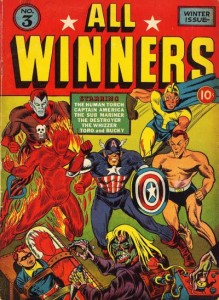
Possibly the first kid hero group, but even here Bucky and Toro are sold in relation to their adult partners
By contrast, the Silver Age is almost almost overpopulated by its kid heroes and the groups they are in. Kid hero groups include the the original X-Men (1963), Teen Titans (1964), the Inferior Five (1966), the New Teen Titans (1980), New Mutants (1982), Infinity Inc (1983), Power Pack (1984), Psi-Force (1986), Freex (1993), Harbingers (1993), Generation X (1994), Runaways (2003), Young Justice (2010), and the first and greatest of all the kid hero teams, the first hero team of the Silver Age, and arguably the greatest of all hero teams, the Legion of Super Heroes (1958).
We’ll look at the Legion next time.

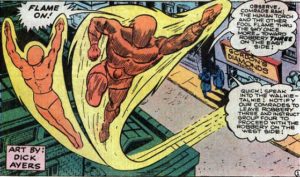
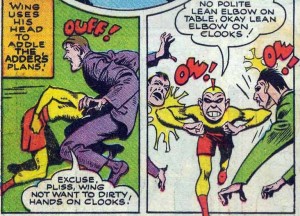
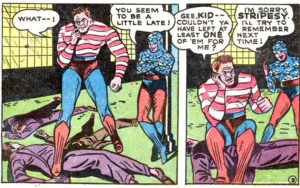
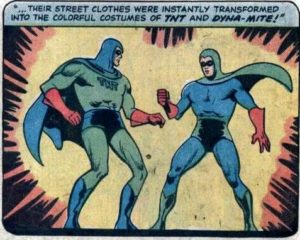
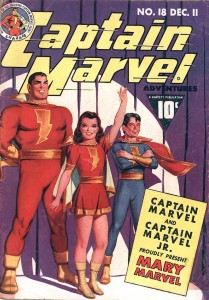
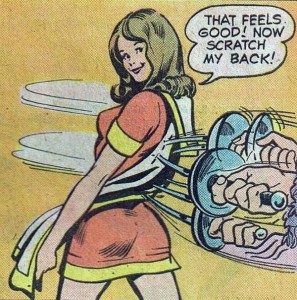
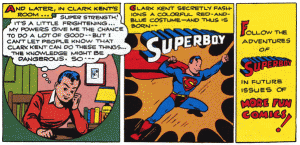
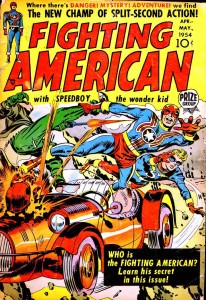
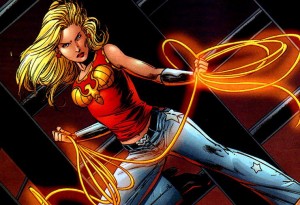
Comments are closed.